Are you puzzled over who the 26-inch bike is designed for or how its size might affect your cycling experience?
26-inch bikes are those with 26-inch-diameter wheels that typically fit riders between 4’8″ and 5’3″ tall. 26-inch bikes were once the standard for mountain biking, but the improved performance offered by 27.5″ wheels and, later, 29″ means they’re now slowly becoming a thing of the past.
The 26″ wheel is still commonly used for other disciplines. For example, it is the largest wheel size used for best kids’ bikes before they graduate to adult sizes. They are also commonly used for cargo, fat tire, dirt jump, and some electric bikes.
Many new and inexperienced riders use wheel diameter as a proxy for bike size, but this usually isn’t the correct way to do it. Instead, it’s best to choose the frame size that best fits your body measurements, regardless of wheel size.
This article will explore the uses and characteristics of 26-inch bikes, explain the importance of sizing, and finish with some tips for finding the right size for you.
Contents
What Is a 26-Inch Bike?
A ’26-inch bike’ refers to a bicycle with wheels measuring 26 inches in diameter. This measurement doesn’t include the tire, just the rim.
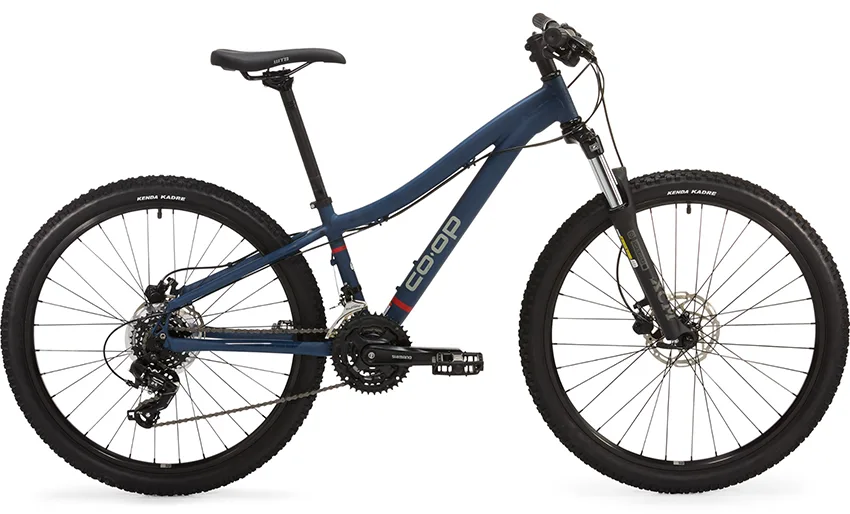
There are advantages and disadvantages to 26″ wheels that vary based on the type of bike and the targetted age range. The size of a bike’s wheels significantly impacts how it performs and handles, along with ride comfort and weight capacity.
- Related post: Bike Wheel Sizes Explained
26″ wheels are considered small for most adult-size bikes. However, many e-bikes have 20″ wheels, and some mini e-bikes are as small as 16″. For kids, 26-inch bikes are the largest available before graduating to adults’ bikes (sizes range from 12″ to 26″).
Moreover, many expedition touring bicycles have 26″ wheels because they offer the most strength for carrying weight and they are easy to service and find replacement parts (hubs, spokes, tubes, tires…) anywhere in the world.
Characteristics and Benefits of Riding a 26-Inch Bike
Here are some characteristics of 26-inch bikes compared to those with larger wheel sizes; the contrary applies when comparing 26″ wheels to smaller ones.
- Maneuverability: Smaller-diameter wheels are more agile and better for navigating tight, technical terrain.
- Acceleration: 26″ wheels allow you to accelerate faster than larger ones. This is favorable for situations with frequent stops and starts and tight maneuvers.
- Rollover Ability: Smaller wheels don’t roll over obstacles as easily as large ones, meaning they lose momentum and struggle to reach and maintain the same rolling speeds on rough terrain.
- Strength: Smaller wheels are typically more robust than larger ones. This is because the spokes are shorter and the rim more compact, so they experience lower loads and are less likely to flex. This strength makes them suitable for aggressive riding styles, jumps, and tricks.
- Weight: Smaller wheelsets are lighter as they have less material.
- Fit: Smaller riders, including many women and teenagers, often find that 26″-wheel bikes provide a better fit and more comfort than larger ones. They usually have lower standover height, are lighter, and are easier to maneuver for smaller individuals.
Does Anyone Ride 26-Inch Bikes Anymore?
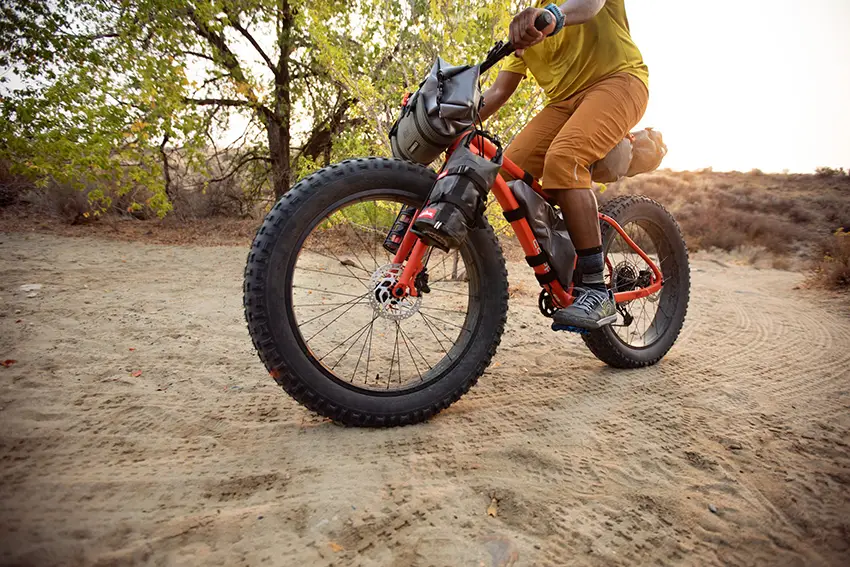
Many riders ask, “Is 26″ a good size for a bike?” 26-inch bikes were the standard for mountain biking for many years, but they’re now mostly found on specific bike styles.
- Mountain Biking: Few 26″ MTBs are still sold today. Larger 27.5″ or 29ers are preferred as they offer better overall performance for most off-road disciplines.
- Fat Bikes: Many fat tire bicycles, electric and non-electric, use 26″ wheels for their extra stability (lower to the ground), strength, and ability to run wider tires. These traits are ideal for tackling soft terrains or supporting heavy loads.
- Cargo Bikes: The high strength of this wheel size makes them suitable for heavy-duty cargo bikes with high payload capacities.
- Dirt Jumping: The strength and maneuverability of 26-inch wheels mean they are still the go-to for dirt jump bikes.
- Teen Bikes: Many bikes designed for teenagers use 26-inch wheels because they provide a good fit for older or taller teens that still don’t fit adult frames.
- Electric Bikes: Many e-bikes, especially comfort-focused and fat tire models, use 26″ wheels. As mentioned, smaller wheels are stronger, so they better handle the high weights of e-bikes too.
- Touring Bikes: Many expedition touring bikes have 26″ wheels because replacement parts, tubes, and tires can be found anywhere in the world and they offer plenty of strength for carrying cargo.
What Is the Difference Between a 26 and 29-Inch Bike?
The difference between 26″ and 29″ bikes is significant. 29″ wheels are heavier, slower to accelerate, less maneuverable, and weaker. However, they are much more comfortable, stable, and fast-rolling, making them favorable for most mountain biking styles.
So, you might ask, do I need a 26″ or 29″ bike? Well, that depends on the style of riding you will do, your age, body measurements, and preferences. 26″ wheels are great for fat tire bikes, electric bikes, and dirt jumpers, but 29ers (700c) or 27.5″ (650b) wheels are ideal for most other adult-size bikes.
If you are researching bikes for a teenager, 26-inch models are usually suitable for ages 10 to 14, but always check the manufacturer’s recommended range before purchasing.
26-Inch Bike: For What Size Person?
Again, 26 inches refers to the wheel’s diameter, not the frame size. Frame size is the most relevant factor in sizing. The one instance where wheel size indicates the bike’s size and the target age range is in kids’ bikes.
| Wheel Size | Age | Height | Inseam |
|---|---|---|---|
| 12" | 2-3 | 2’10”-3’4” | 14-17” (35-42 cm) |
| 14" | 3-4 | 3’1”-3’7” | 16-20” (40-50 cm) |
| 16" | 4-5 | 3’7”-4’0” | 18-22” (45-55 cm) |
| 18" | 5-6 | 3’9”-4’3” | 20-24” (50-60 cm) |
| 20" | 6-8 | 4’0”-4’5” | 22-25” (55-63 cm) |
| 24" | 8-11 | 4’5”-4’9” | 24-28” (60-72 cm) |
| 26" | 12+ | 4’8”-5’3” | 28-31" (71-78 cm) |
Small wheels are also used for XXS/XS models for shorter riders (e.g. Co-op Cycles DRT 1.0). It’s worth noting that two people of the same height might need different bike frame sizes. Arm, torso, and leg length differ from person to person, so sizing is more complex than simply matching somebody’s height with wheel or frame size.
That said, 26″ bikes for children are best for heights roughly between 4’8″ and 5’3″. However, a 26″ bike for adults will have a specific height range associated with each frame size. If only one frame size is offered (as is common with e-bikes), it will be tailored toward adults in a specific height range. If you need to go smaller, we recommend considering 24-inch bikes instead.
Body Measurements
When deciding which frame size to choose, rider height and inseam length are the two most important factors to consider. Torso and arm length are also important.
- Rider Height: 26-inch bikes for adults will come in a range of sizes or a one-size-fits-all frame. Choose the frame size you fit into, or try to test-ride both if you fall between sizes.
- Inseam Length: Inseam length (the length of the inner leg, from the crotch to the ankle) is just as important as height. Most manufacturers provide an inseam range for their frame sizes. Sometimes this doesn’t match the height if you have a long or short inseam for your height. Go with the frame that fits your inseam over the one that fits your height.
It’s a good idea to test-ride a bike before buying it to ensure it’s the right fit. Bikes are highly adjustable, so there is always room to modify saddle position and angle, handlebar height and angle, stem length and angle, or the position of the hoods (on road bikes).
Are 26-Inch Wheels Too Small?
Kids’ bikes aside, most riders now consider 26-inch wheels too small for mountain bikes. The strength, maneuverability, and acceleration advantages of smaller wheels are still largely present in the 27.5″ wheel size, just with improved rollover ability, comfort, and stability. In fact, mountain bikers favor 29″ wheels for all but the most technical-style riding because they allow you to roll over much larger obstacles without losing momentum.
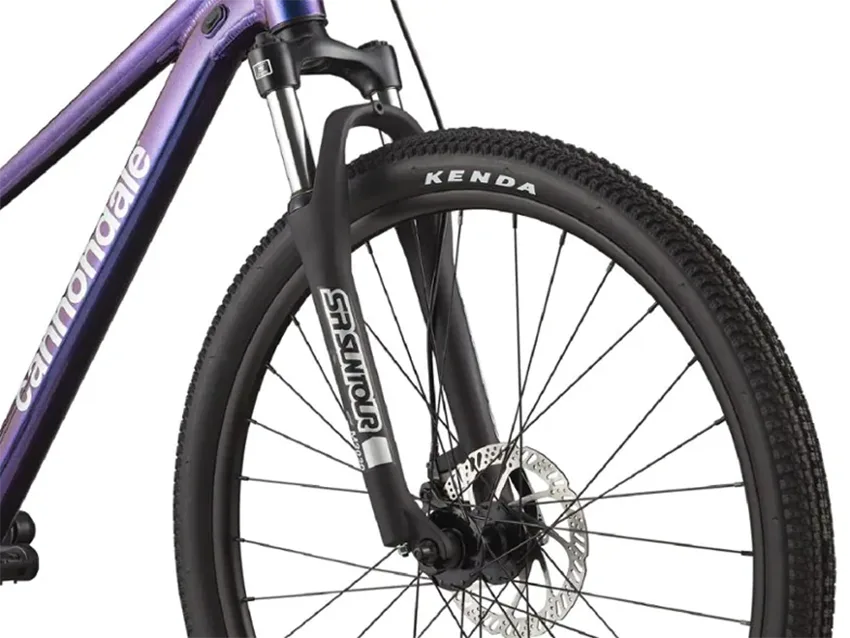
26″ wheels have found a few niches outside of pure mountain biking. Almost all fat bikes and dirt-jump bikes (electric and non-electric) use this size rim for the balance of characteristics it offers. Additionally, many of the best cargo bikes use 26″ or smaller wheels due to their strength.
What Age Is a 26-Inch Bike Suitable For?
Is a 26-inch bike for kids or adults? The answer is both. A 26″ bike could be suitable for people of any age. The wheel size doesn’t determine who should ride it.
The most important variables are the bike style, frame size, and manufacturer’s intended height and age range.
If it is a 26″ bike for teens, a rough age range would be 10 to 14. However, the reference ranges to look out for are height and inseam length, as kids of this age (beginning of puberty) vary greatly in height. In contrast, a 26″ adult bike can be used by anyone who fits into the indicated height or inseam range.
Can a Woman Ride a 26-Inch Bike?
Shorter women (below five feet tall) often have difficulty finding an adult-size frame that fits. For this reason, 26-inch teen bikes are worth considering, as the height range will be more appropriate.
Smaller 26″ wheels used on an adult’s bike frame also allow manufacturers to create a lower standover height, favorable for shorter riders. Given that, manufacturers who use progressive wheel sizing will use smaller wheels on the small and extra small frames.
The Relevance of Bike Sizes
Choosing the correct bike size is crucial for both comfort and performance. However, as mentioned, this is usually done by picking the appropriate frame size, not the wheel diameter.
Here’s a quick guide to road and mountain bike sizes, based on bike frame size and relative to inseam and height.
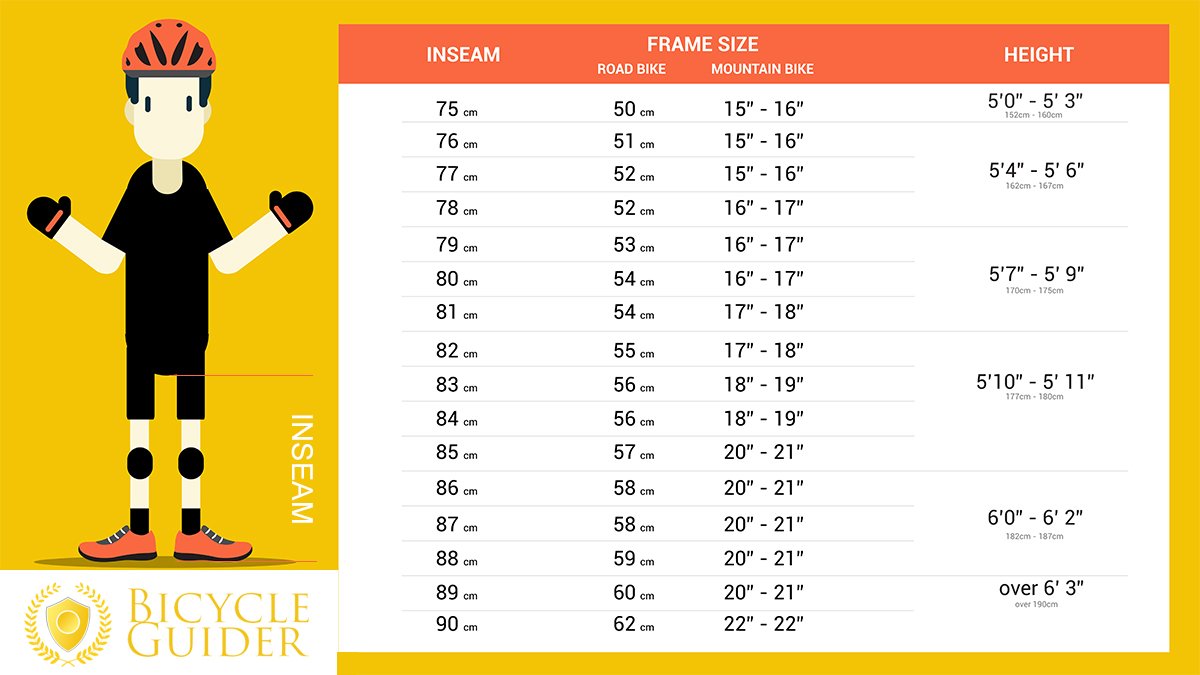
Now, you can find out why choosing the right bike size is actually so important.
Comfort and Injury Prevention
Choosing the appropriate size bike is key to ride comfort. Too big, and you’ll feel like you’re overreaching; too small, and you’ll feel cramped. When a bike fits, it’s natural and easy to ride, and any initial discomfort from riding goes away after the first two or three rides as your body adapts.
Whether it’s too big or too small, issues may arise with your back, neck, wrists, and knees. These issues are more pronounced on drop-bar bikes (road, cyclocross, and gravel). Injuries occur from repeated body movements done in awkward positions, which is common when riding a bike that’s too big or too small.
Efficiency and Performance
If a bike fits you correctly, you can produce power more efficiently by activating the appropriate muscle groups throughout the pedal stroke.
This will allow you to go faster and delay fatigue. If the bike doesn’t fit, you may overuse one muscle group, limiting your max power and tiring you more quickly.
This is why choosing the right frame size and bike fitting it properly is so important for optimal performance.
Control
When a bike fits, it’s easier to control and handle, improving how safe and enjoyable it is to ride. If a bike is too big, it can be challenging to handle, especially at low speeds or in tight situations. If a bike is too small, it might feel twitchy and unstable, especially at high speeds.
Remember that different bike types (road, mountain, hybrid) may require different sizes for the same rider, and sizing also varies between styles, brands, and model families of the same brand. Always refer to the manufacturer’s sizing chart or consult a bike shop professional.
What Is the Weight Limit for a 26-Inch Bike?
The weight limit for any bike depends on a variety of factors, including the targetted age range, type of bike, the materials it’s made from, the engineering, and the quality of the components. In general, smaller wheels are better for heavier riders and bikes (like fat-tire electric bikes) as they can sustain more weight.
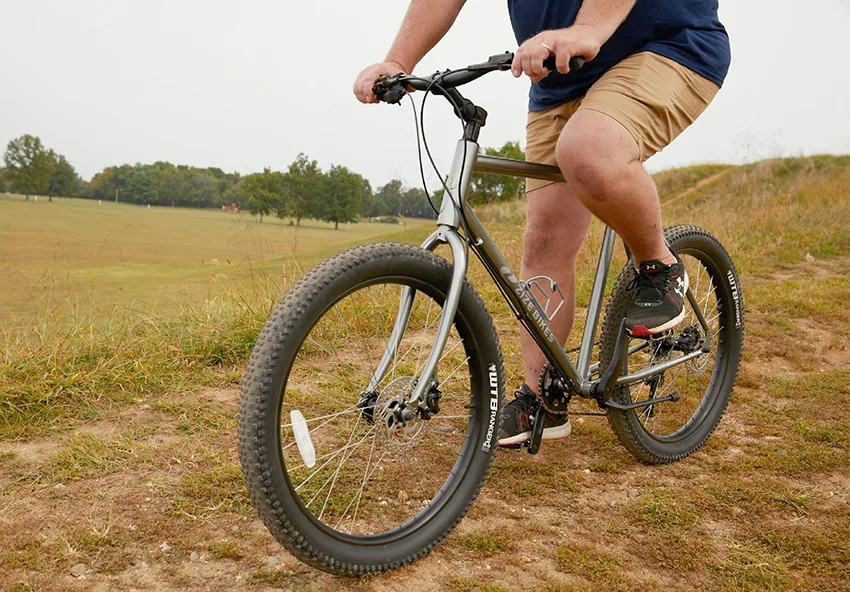
Cargo bikes are generally built to withstand more weight than standard hybrids due to their intended use for carrying extra weight. For this reason, they have smaller wheels (20-26″). Similarly, a bike made from high-quality Chromoly steel typically has a higher weight limit than one made from cheap steel or aluminum. Factors such as rim and tire width, spoke count, spoke gauge, and suspension also play a role in determining the weight limit of a bike.
On average, bikes are designed to carry a weight of about 250 lb, but 26″ teen bikes may have lower weight limits. This is a rough average range, and the actual weight limit will vary significantly from model to model. Some heavy-duty cargo or plus-size bikes for heavy people can carry weights of up to 550 lb.
Finally, we recommend checking the manufacturer’s specifications to determine a specific bike’s weight limit. And remember that the weight limit specified usually includes the rider’s weight and any cargo or equipment carried.
Important Bike Sizing Tips
As discussed, choosing the right bike size is crucial for comfort, efficiency, and control. Here are some important tips to help you find the right size:
- Know Your Measurements: Before searching for a bike, take an accurate height and inseam measurement. Knowing these will give you the best chance of choosing the correct frame size.
- Use Manufacturer’s Size Charts: Almost all bike manufacturers provide size and geometry charts with recommended height ranges for each frame size. Some brands also offer inseam ranges. If so, you may find that you fit different frame sizes based on each measurement. Sizing also varies between models, so always refer to the specific chart for the bike you’re considering.
- Standover Height: Another quick method of testing a bike size in person is to stand over the bike as if you’re about to start riding, with your feet flat on the ground. There should be one or two inches of clearance between your crotch and the bike’s top tube for road bikes and two to three inches for mountain bikes and hybrids.
- Reach: Reach is the distance from the seat to the handlebars. Your elbows should be slightly bent when seated on the bike with your hands on the handlebars. If you’re stretching to reach the handlebars, the bike is too big. If you feel cramped, the bike is too small. Reach is highly adjustable by modifying saddle position, stem length, and handlebar height or angle.
- Test Ride: Always test-ride a bike before purchasing, when possible. This is the best way to determine if a bike is the right size. You should feel comfortable and in control by roughly setting saddle height. Then, you can fine-tune the fit with further adjustments.
- Professional Bike Fitting: If you plan to ride regularly, consider getting a professional bike fit. A bike fitter can measure you pre-purchase and recommend an appropriate size, or, more typically, they adjust the bike you own to fit you as best as possible. This isn’t necessary for urban-style bikes but is invaluable for road, gravel, and mountain biking.
- Bike Style (Road Bikes): Choosing the correct style of road bike is almost as important as choosing the right size. For example, if you’re a casual cyclist who cycles twice a week and works a desk job, you will likely struggle to be comfortable riding an aggressive aero road bike. An endurance-style road bike will be more upright and comfortable.
Remember that comfort is the most important part of choosing a bike size unless you plan to compete. Even if a frame is technically the correct size, it may not feel right. Always go with what feels best.
Final Takeaways
26-inch wheels have several benefits, including better maneuverability, faster acceleration, more strength, and lighter weight. While these bikes are almost obsolete in mountain biking, they’ve found a home within other bike styles.

26″ wheels are preferred by smaller riders, including short women and teenagers measuring between roughly 4’8″ and 5’3″, as they provide a better fit and more comfort than larger ones. In addition, fat tire bikes, e-bikes, and dirt jumpers all utilize 26″ rims for the benefits that they offer.
Although wheel diameter is a factor in sizing, frame size is the more accurate way to determine whether or not a bike fits. Buyers should know their height and inseam length in order to choose the appropriate frame.
Choosing the correct bike size assures comfort, performance, and control and helps prevent repetitive strain injuries. Whether you opt for a 26-inch bike or not will depend on your needs and preferences, including your body measurements and the type of riding you plan to do. When searching for a bike, take the time to find the right bike for you by test-riding or consulting a professional.

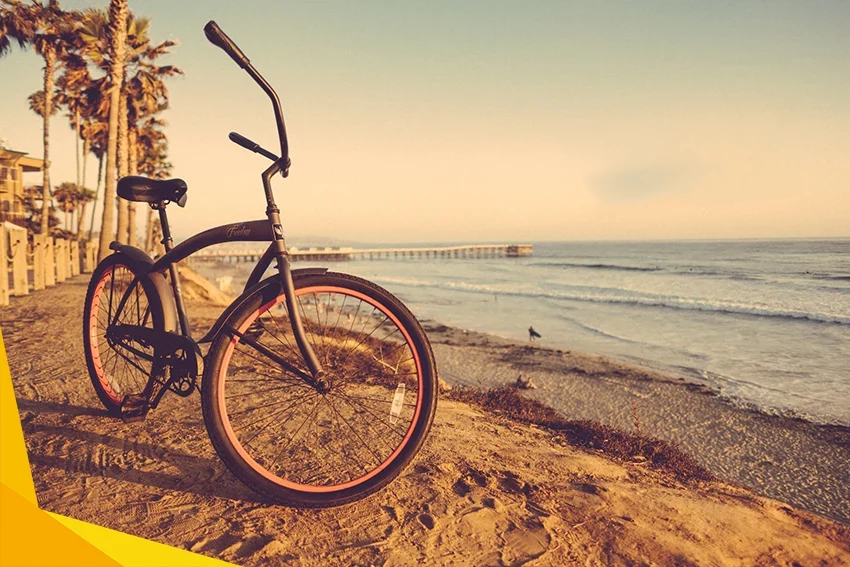



Love this article, I am 5 feet 0 inches tall and finding a bike that fits has been a challenge. At least now, I feel like I know what to look for and to ask if they can switch the tires to 24 instead of 26.
Always happy to help! Switching the wheels and tires from 26″ to 24″ may not be possible in the majority of cases, but you can always get a bike with 24″ wheels that fits better. Cheers!